From Mulching to vinegar, flame weeding to smothering, we’ve got a lineup of 10 proven techniques for weed control in natural farming systems.
By the end of this guide, you’ll learn about the techniques, and some of the benefits that each method brings.
So, if you’re looking for non-chemical ways to control weeds in your garden, you’re in for a treat.
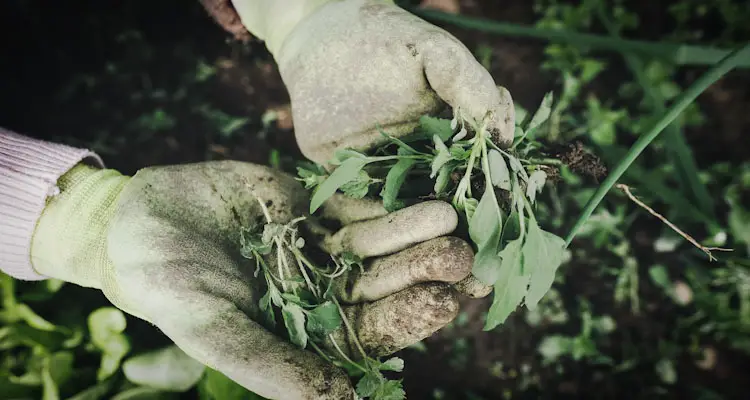
But before we dive into these eco-friendly methods, we need to clear up a common misunderstanding:
What Are Weeds?
Generally, “any plant growing where it is not wanted” is considered a weed. But not all plants we call “weeds” are actual troublemakers.
In fact, some of these so-called weeds are like nature’s little helpers. They protect the soil, improve the structure, and can even tell us about the nutrients and other qualities within.
True weeds, on the other hand, are relentless. They spread like wildfire, stealing nutrients and sunlight from our precious crops and possibly killing them.
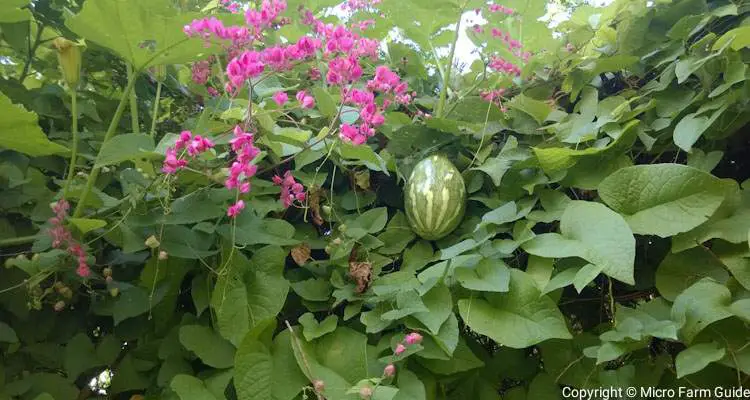
As a result, we need to keep these pesky weeds from taking over our gardens, or at least under control. Now, it is possible to do so naturally, starting with the first of our 10 extraordinary methods:
1. Mulching
Mulching covers the soil using organic materials such as tree clippings or inorganic materials such as breathable landscaping fabric.
It helps retain moisture and offers a protective layer that shields your plant roots from the harsh elements.
In theory, Mulching helps keep “true weeds” from receiving the sunlight they need to grow. This causes them to die off before getting a chance to establish themselves.
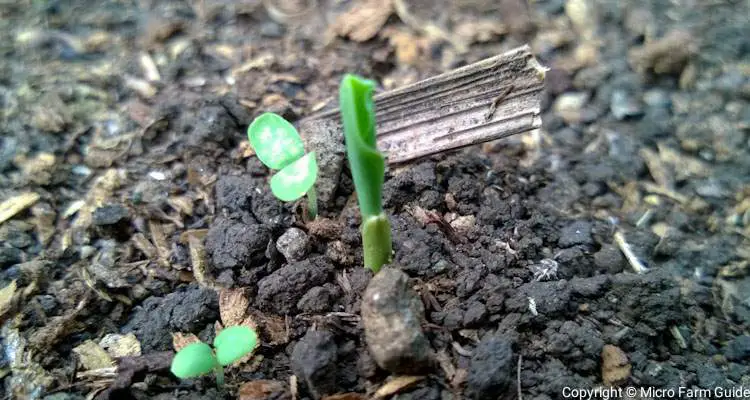
However, some weeds persistently force themselves through the mulch or remain dormant until they receive the conditions to grow.
2. Ground Cover Plants (Ground Covers)
Ground covers are a group of low-lying plants, such as thyme, that tend to spread over an area. They are used primarily to protect the soil from erosion.
However, they are also effective at competing with weed seedlings for light, nutrients, and moisture, keeping them in check without affecting the main crops.
Ground covers can grow safely at the base of plants. And, there are some varieties that you can use to cover vast areas, including pathways.
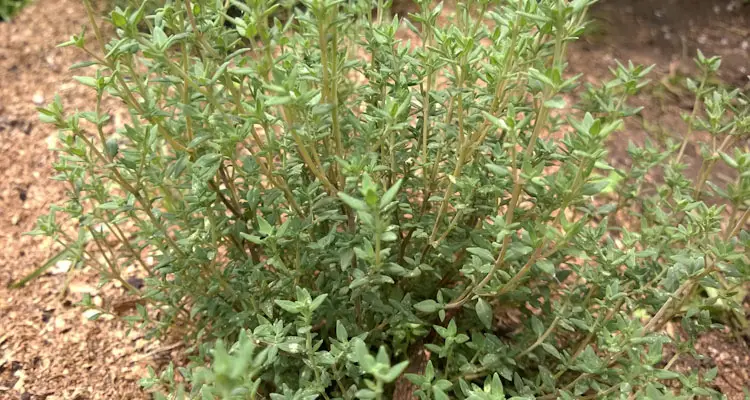
Some ornamental plants make excellent ground covers, provided they grow at most 1 foot tall and require little maintenance.
Any weeds that can grow through the groundcovers will be much smaller and can easily be managed by:
3. Hand Weeding
Hand weeding involves physically uprooting unwanted plants from the ground.
It is effective in removing stubborn weeds from between crops. Yet, it can be labor-intensive because of the plant’s root system and type of soil.
Hand-weeding works best in moist soil and, as a result, can benefit from other techniques, such as Mulching, which keeps the soil moist and loose.
However, it is unreliable if the weeds are well established or when dealing with compacted soil.
That said, this hands-on approach lets you closely monitor your plant’s health and the condition of your soil.
4. Cover Crops
Cover crops are grown primarily to prevent soil erosion, and improve its fertility over time.
Typically, you can use annual grasses, legumes, and other fast-growing plants that can be cut and returned to the soil within the growing season.
They effectively smother weeds by competing for light, moisture, and nutrients. However, you must choose them wisely to avoid introducing weeds into the system.
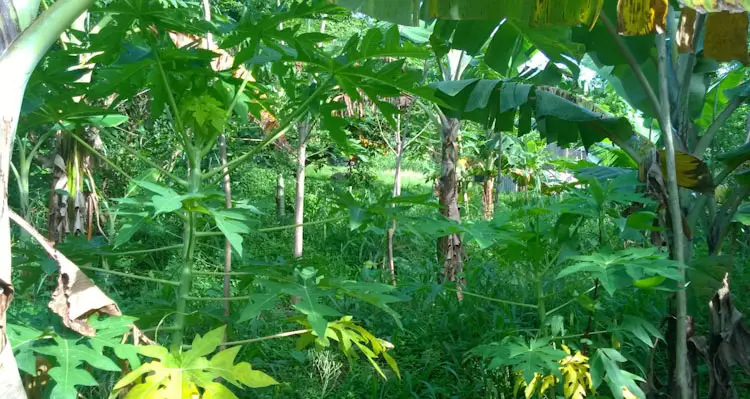
5. Vinegar-Based Weed Sprays
Believe it or not, you can use vinegar as an effective spot treatment for weeds.
The acetic acid in vinegar damages the cells of the plants, causing the plant to dry out over time.
However, not any old vinegar will do. You can use distilled white vinegar to some degree, but you’ll need to get the concentrated stuff for the best results.
This also means that ordinary homemade vinegar won’t cut it, but they have many other uses in the garden.
6. Solarization
Solarization is heating the soil by covering it with clear plastic. This is done during hot, dry spells and can take up to 6 weeks.
The heat produced by solarization can sterilize the soil, destroying weed seeds and harmful organisms in the top few inches of soil.
It will encourage weed seeds to germinate but prevent them from receiving water while exposing them to extreme heat.
As a result, most, if not all, seeds germinate and are destroyed by the end of the solarization period without chemical treatments.
This is a boost for your soil’s overall health and the growth of young seedlings.
7. Sheet Mulching
Sheet mulching is a no-dig process of covering an area in layers of organic materials in preparation for planting.
This is done by placing layers of cardboard, sheets of newspaper, or other material, followed by compost or other organic materials.
Sheet mulches allow us to create the perfect weed-free growing media for plants, while depriving weeds of the light energy they need to grow.
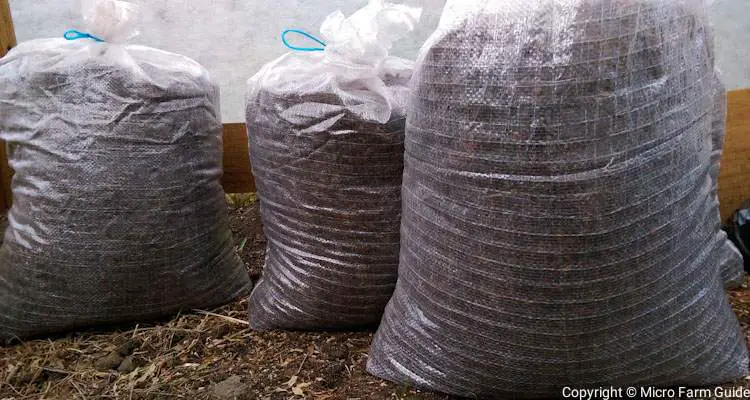
However, some creeping weeds, such as bindweed, can slowly creep under the cardboard layer and emerge at the edges.
8. Flame Weeding
Flame weeding involves using extreme heat from a flame-producing device to destroy young weeds.
The process involves passing the heat torch over the weeds, just long enough to destroy the plants but not long enough to damage the soil life beneath.
This device is most effective against young plants, preferably less than 4 inches tall.
It can be used with the stale seed bed technique, which will first encourage seeds to germinate in less-than-ideal conditions before burning them to a crisp.
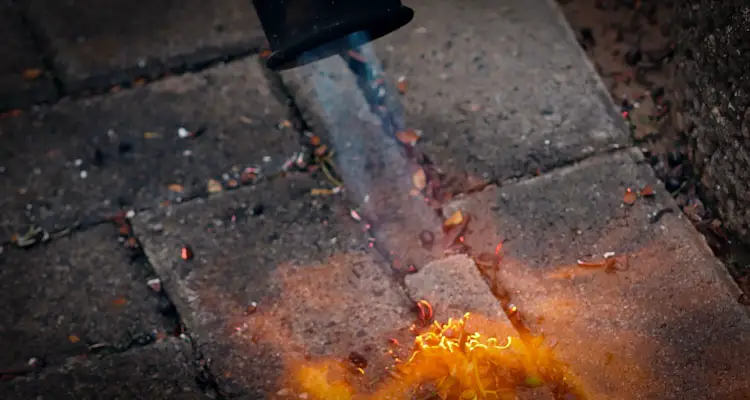
9. Proper Soil Management
Healthy soil creates an environment where your crops can outcompete weeds.
In theory, by creating the ideal soil conditions for your plants to grow, it becomes unfavorable for weeds.
This is because weeds prefer a different pH, nutrient type, and levels to most farm crops, such as vegetables.
Of course, there is more to soil management than pH and nutrients, but that’s the gist.
10. Mechanical Cultivation
Mechanical cultivation involves using tools and simple machines to cut or uproot young weeds.
This is a great technique to get rid of weeds while breaking the soil surface to allow air to penetrate easily.
As you would expect, this exact tool and method used will depend on the plant’s age, soil type and the size of the area.
For example, hand-held hoe works great on sandy, loam, and heavily mulched garden beds. While a tiller or disc plough might be needed for large fields, especially when dealing with heavily compacted clay.
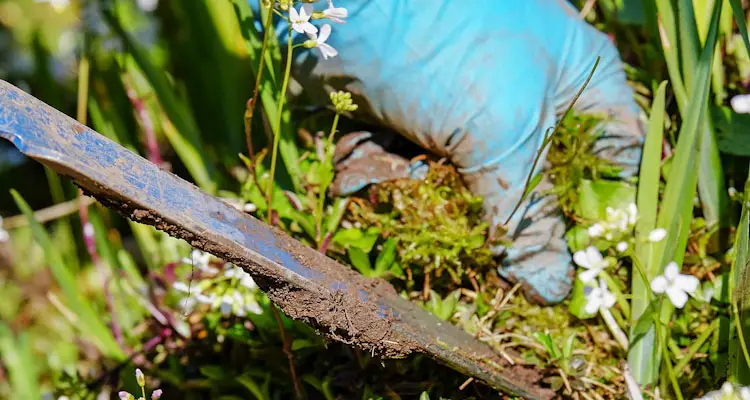
As a result, cultivating machines work best in combination with other techniques and is an excellent alternative to hand weeding.
Weed Management Through Natural Succession
Bare soil is like a wound on the earth, and weeds are like a bandaid. One which also tells us about the current “health” of the patient.
Weeds grow fast to protect the earth and thrive in areas with an abundance of certain soil organisms.
I’m sure it would come as no surprise that these microorganisms are well-adapted to provide the nutrients the weeds need to grow.
As the weeds grow and die, they create favorable conditions in the soil for other plants to grow.
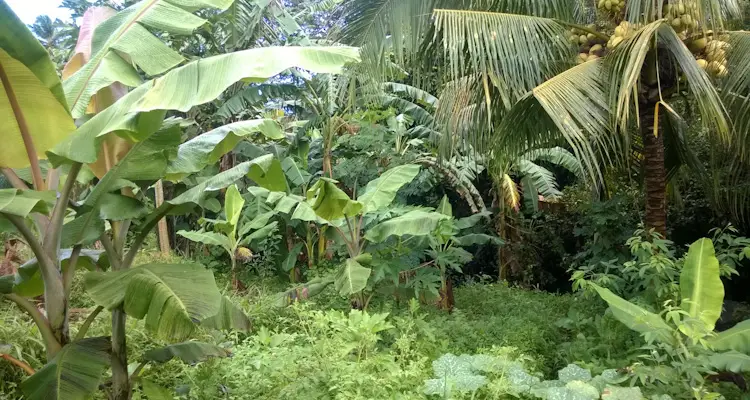
These new plants encourage shifts in the soil biology to cater to their needs. This shift also means fewer organisms to produce the type of food that the weeds need.
These new plants grow and die, adding organic material to the soil, creating ideal conditions for the following types of plants and soil organisms.
At each stage, weeds become noticeably less until they can no longer grow in the system. So they become dormant, waiting for the time when they are needed.
This is the process of Natural Succession. Looking at weeds through this lens, you realize that they are not as bad as we think but a helpful part of developing soils and ecosystems.
Conclusion
Now, you can finally stop your struggle against weeds and manage them effectively using these 10 powerful natural techniques.
Remember, it’s not just about keeping things tidy but creating a healthy, vibrant environment where plants can thrive and nature can progress.
So, if you want a garden teeming with life and full of your desired plants, dive into these techniques with enthusiasm and watch as your garden flourishes like never before.
Related Questions
1. What are the main methods of weed control?
The main weed control methods are mechanical weeding, biological control, and chemicals. However, due to the impact of chemicals on the environment, there has been a renewed focus on natural or biological methods.
2. What is weed, and how is it controlled?
Weeds are fast-growing, invasive plants that compete with other plants for light, moisture, and nutrients. They can be controlled by creating conditions that are unfavorable for their growth.
3. What are the two most common types of weed control?
The two most common types of weed control are mechanical, such as tillage, and chemical. However, this will differ based on culture, local laws, and information, equipment, and solutions availability.
References
University Of Vermont. Flaming Stale Seedbeds for Weed Control. uvm.edu/vtvegandberry. Accessed August 2023

